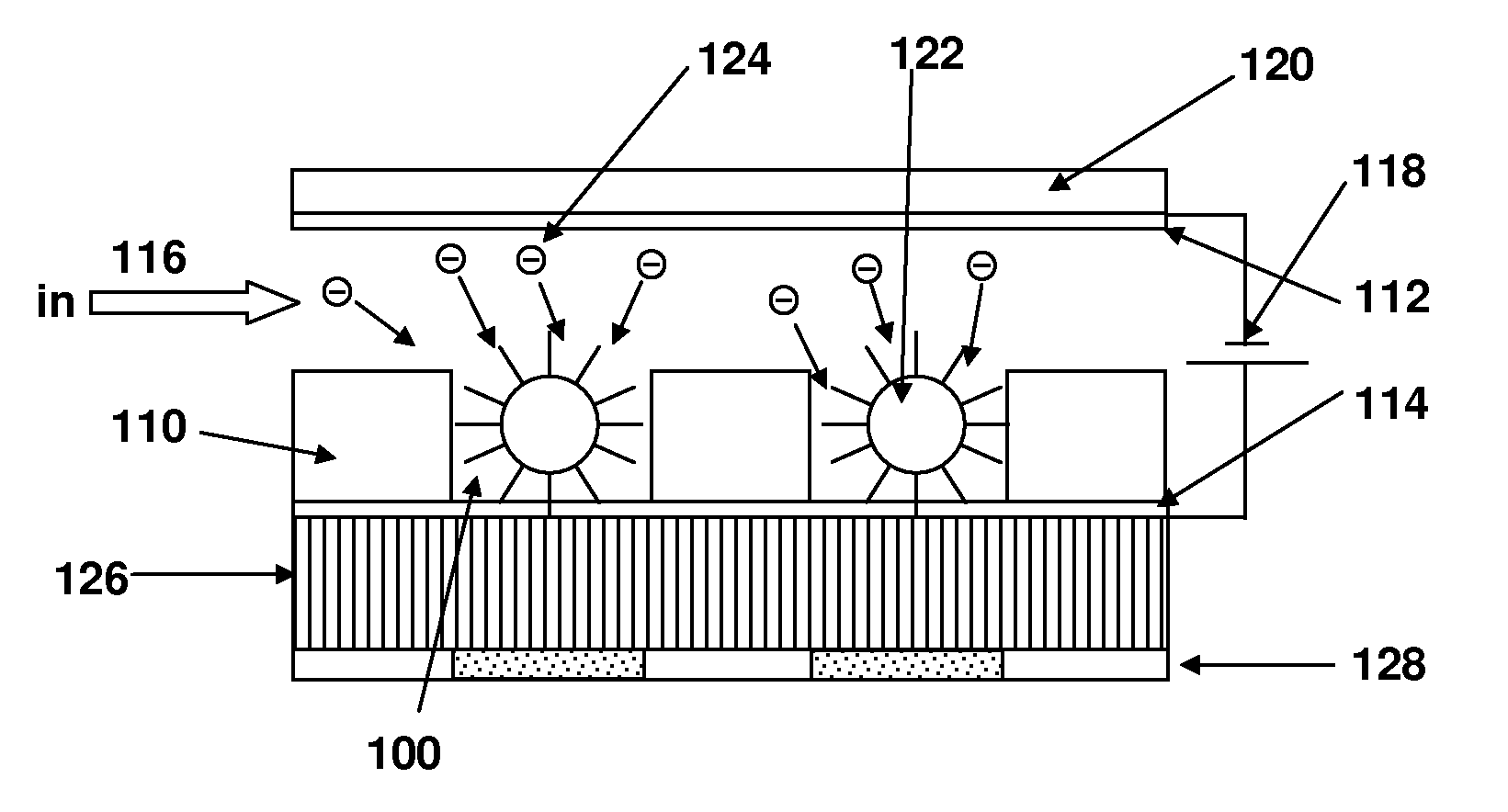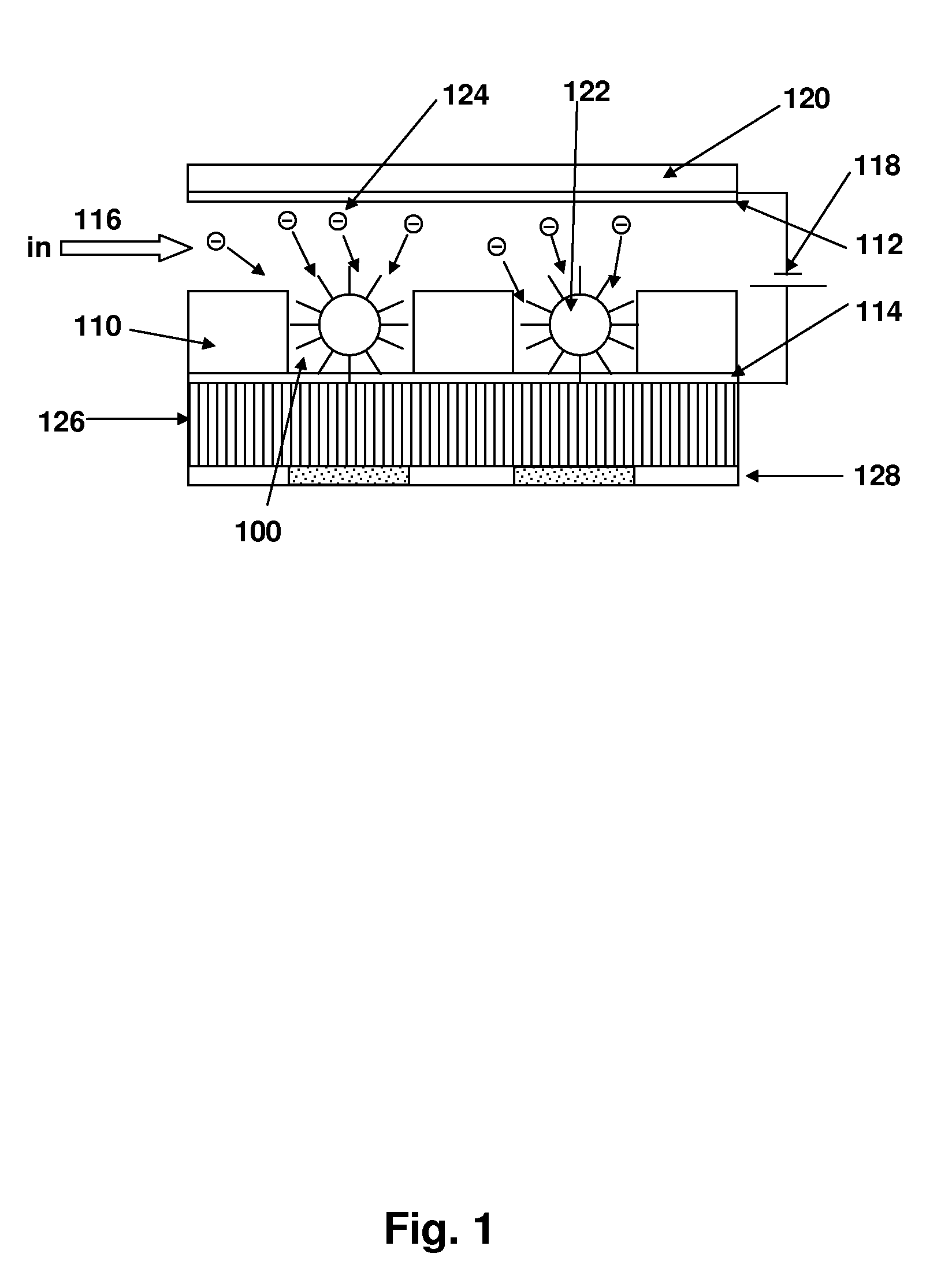Method and Apparatus Using Electric Field for Improved Biological Assays
- Summary
- Abstract
- Description
- Claims
- Application Information
AI Technical Summary
Benefits of technology
Problems solved by technology
Method used
Image
Examples
example 1
Concentration of Beads into Electrode Wells
[0093]In this example, the electric field assisted trapping of 1 μm fluorescent polystyrene beads inside 50 μm wells is illustrated. As shown in FIG. 3, four electrode wells were prepared. The wells were created using 150 μm thick Mylar sheets with adhesive on one side. The electrodes were fabricated on a printed circuit board and each electrode could be individually activated by applying a voltage across the electrode and bulk solution. An 80 μm thick current conducting Nafion membrane formed the bottom of the well and isolated the electrodes from the solution containing the beads.
[0094]A multi-output computer controlled power supply (Labsmith, HVS 3000D) was used to individually activate an electrode. An upright Nikon epifluorescent microscope was used for imaging. The bead solution was prepared by 10,000× dilution of the stock solution in 10 mM Tris-HEPES buffer. The bead solution was then filled in the 3 cm long and 5 mm wide flow chamb...
example 2
Electric Field Directed Preconcentration of Fluorescent Species
[0095]Referring now to FIG. 4, a prototype device for showing electric field directed movement of charged molecules is illustrated. The device comprises a sheet of a 250 μM thick silicone gasket material 410 having a 1 mm diameter hole in the sheet. This is applied to a 20 nm parylene dielectric layer 408 which had been applied to a 150 nm ITO layer 406 on a 1 in.×3 in glass slide 404, forming a “bottom.” To form a “top,” another glass slide 414 was similarly coated with an ITO layer 415 to form an electrode and a parylene layer 417 on the “bottom” side of the top electrode in contact with fluid, which can be contained in a well 412 formed when the two slides were sandwiched together.
[0096]A Coolsnap fx-16 CCD camera, Olympus IX70 epifluorescent microscope imaging device 416 was arrayed beneath the fluid well. Conductive copper tape was used to connect the electrodes to the signal generator.
[0097]10 mM Tris-HCl solution ...
example 3
Electric Field Directed Preconcentration of Pyrophosphate
[0099]A device was constructed essentially as shown in FIG. 4, with the following differences: instead of a camera and microscope, a magnet and a Hamamatsu photomultiplier tube was arrayed beneath the well 412, as shown at 416 in FIG. 4.
[0100]The procedure was as follows: Conductive copper tape was attached to the exposed ITO layer on the glass slides. The silicone gasket was placed on the bottom glass slide and pressed against the slide to form a seal. The 1 mm hole in the gasket was loaded with magnetic beads containing enzymes. A magnet was placed below the glass slide to hold the magnetic beads stationary. The 1 mm hole in the gasket was filled with pyrophosphate solution. The second glass slide was placed on the top of the gasket to seal the top of the well containing the chemicals. The chemicals were as follows: Pyrophosphate solution, magnetic beads loaded with ATP sulfurylase, and luciferase (obtained from 454 Life Sci...
PUM
| Property | Measurement | Unit |
|---|---|---|
| Thickness | aaaaa | aaaaa |
| Electric potential / voltage | aaaaa | aaaaa |
| Frequency | aaaaa | aaaaa |
Abstract
Description
Claims
Application Information
 Login to View More
Login to View More - R&D
- Intellectual Property
- Life Sciences
- Materials
- Tech Scout
- Unparalleled Data Quality
- Higher Quality Content
- 60% Fewer Hallucinations
Browse by: Latest US Patents, China's latest patents, Technical Efficacy Thesaurus, Application Domain, Technology Topic, Popular Technical Reports.
© 2025 PatSnap. All rights reserved.Legal|Privacy policy|Modern Slavery Act Transparency Statement|Sitemap|About US| Contact US: help@patsnap.com



